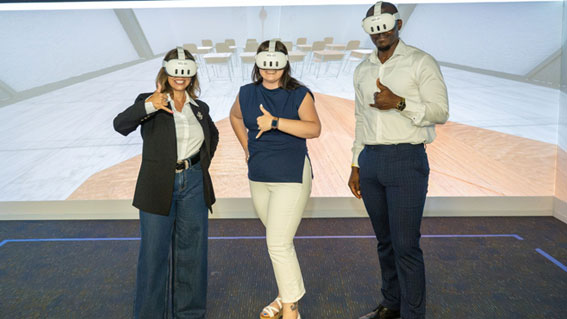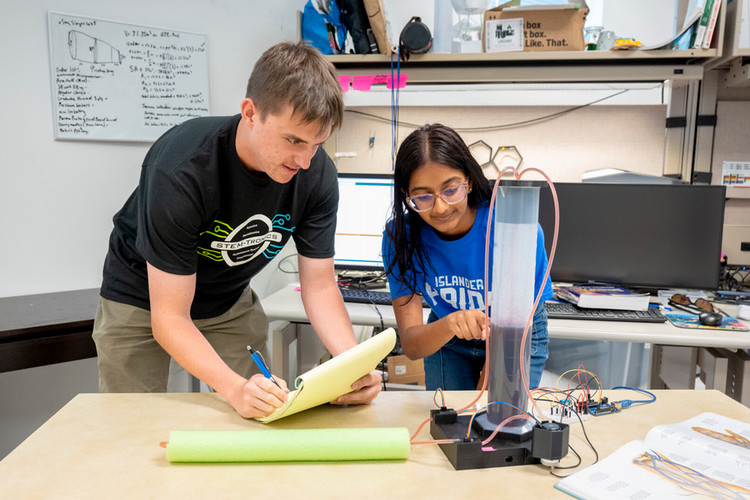Texas Anglers Help HRI’s Sportfish Center Tag More Than 6,000 Sharks for Research
CORPUS CHRISTI, Texas – Center for Sportfish Science and Conservation (CSSC) scientists at the Harte Research Institute for Gulf of Mexico Studies at Texas A&M University-Corpus Christi this week surpassed more than 6,000 Gulf of Mexico sharks tagged for conservation research.
It marks a milestone in an important relationship between Texas anglers and the science that supports their fishery.
Since 2014 the institute has partnered with Sharkathon, the Corpus Christi shark fishing tournament, and Texas Shark Rodeo, a year-round fishing competition. These conservation-minded events support catch-and-release fishing of sharks, and by providing experienced shark fishermen with kits to tag sharks as they release them back into the Gulf of Mexico, scientists have been able to gather data on thousands of these apex predators.
“This partnership provides us with a very unique opportunity – anglers get to participate in the science behind a sport they are very passionate about, and at the same time we as scientists have an opportunity to gather data on a scale that would not be possible in terms of manpower or funding,” said Dr. Greg Stunz, HRI Chair for Fisheries and Ocean Health and Director of the Center for Sportfish Science and Conservation. “These partnerships allow us to generate the most scientifically robust data as possible. Plus, anglers have fun and engage in science at the same time.”
Most Sharkathon and Texas Shark Rodeo fishermen are equipped with numbered tags that attach a unique ID number to their shark. That way scientists know when and where certain sharks appear. Experienced fishermen have even helped the Sportfish Center to outfit sharks with state-of-the-art satellite tags that provide real-time data about their movements in the Gulf of Mexico, tracking some sharks on journeys that span months and hundreds of miles of ocean.
The data helps to determine population trends of coastal sharks; where these sharks are living and where they’re traveling; and growth rates can be determined when a shark gets recaptured. The more data used in these assessments, the better picture scientists get of how many sharks are in the Gulf of Mexico, where are they being encountered, and how many are being removed each year.
The Sportfish Center is also beginning a new data collection effort studying the survival rate of sharks that are caught and released during surf fishing. Dr. Matthew Streich, a co-Principal Investigator on the study, said it’s focused on land-based shark fishing because almost nothing is known about the survival of these fish.
Scientists will be using two advanced tagging methods to estimate the survival rate of sharks: Pop-up Satellite Archival Tags that employ will remain attached to and track the shark’s movements for 1-2 months before being collected by scientists, and Acceleration Data Loggers, which will monitor underwater swimming behavior for a few days following release.
Scientists plan to target popular inshore catches like scalloped hammerheads, blacktip sharks, bull sharks, and tiger sharks, which have all shown to have varying levels of sensitivity to capture-related stress. Fishermen will also be providing additional data to help with the study, recording the time the shark was hooked, the time they reeled it in, and the time they released the shark to help scientists calculate overall handling time.
The data will be important for improving future stock assessments and help managers better manage the popular, but understudied, land-based shark fishery in the Gulf.
HRI graduate student Dr. Kesley Gibson, who recently defended her dissertation studying shark migration patterns and who works with anglers to tag sharks, said many of the tournament fishermen are experienced shark handlers who jumped at the opportunity to help. The Sportfish Center team recently completed a study that showed these anglers are exceptionally good at accurately identifying sharks, which is not always easy to do, proving that partnering with citizen scientists can generate meaningful and valid scientific data.
“Working with recreational fishermen to collect data provides additional information that we could have never gotten on our own. It would take an incredible investment of time and resources for the 15 of us to do what 400 anglers can collectively,” Gibson said.
Beyond the data gathered, the tagging also gives fishermen a stake in conserving a fishery they love.
“These are recreational anglers out there collecting this data on their own. We aren’t out there tagging for them or looking over their shoulders,” Gibson said. “They’re invested in it.”
As the first research institute in the western Gulf founded to support recreational fisheries management, engaging with the fishing public to promote conservation and a sustainable fishery is an important part of the Sportfish Center’s mission. The Sportfish Center’s shark tagging and tracking program is the largest in the western Gulf of Mexico. Learn more by visiting SportfishCenter.org.







